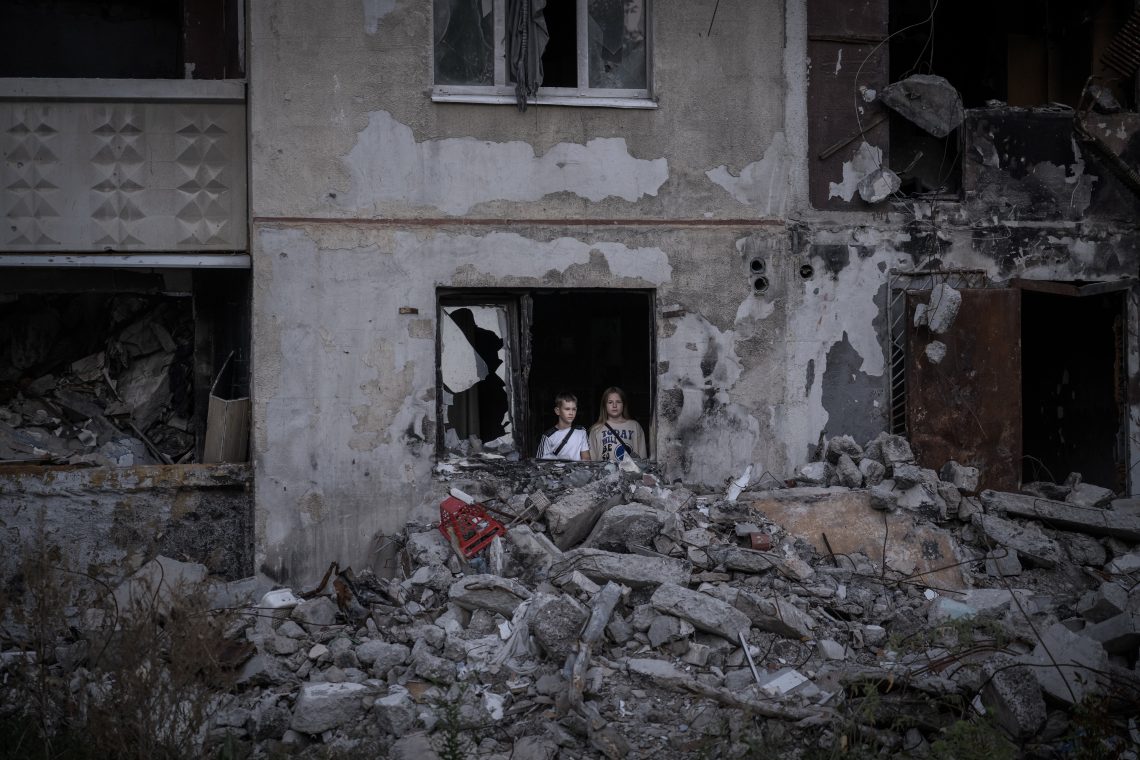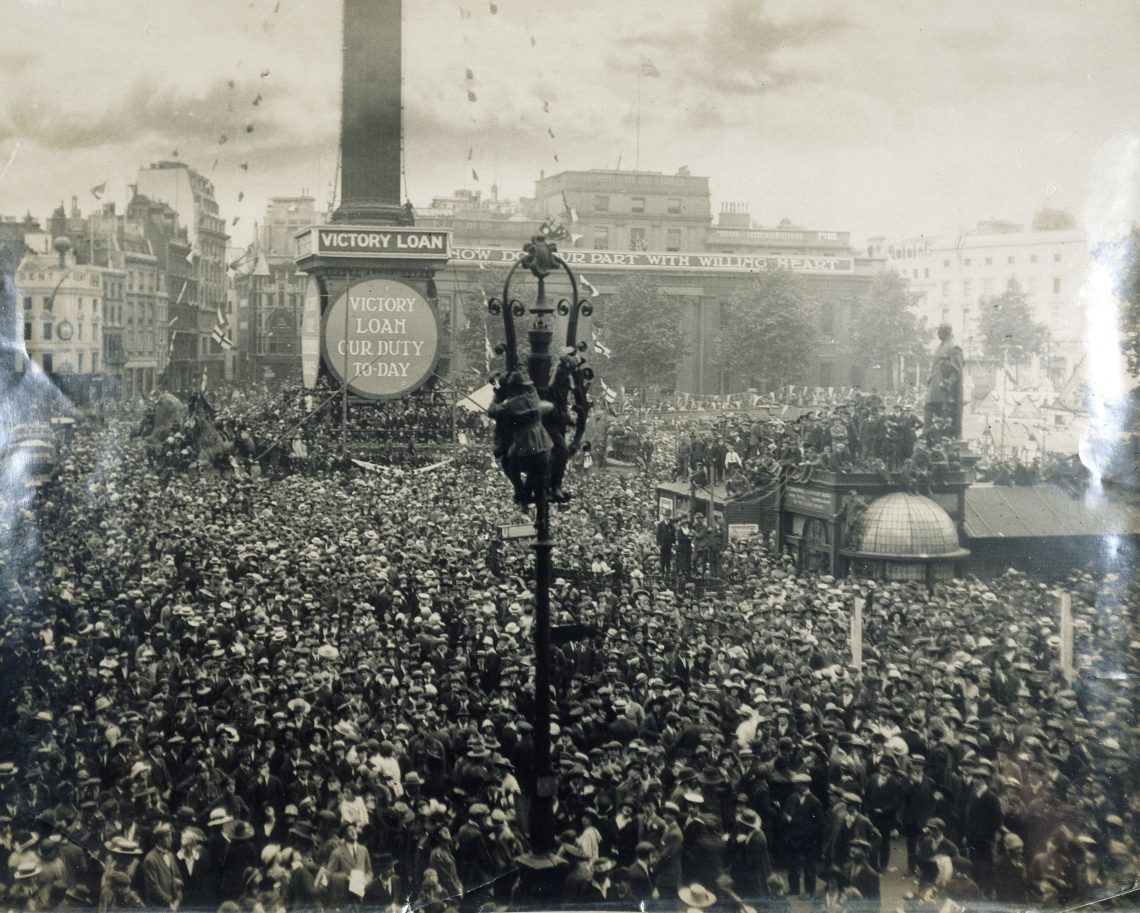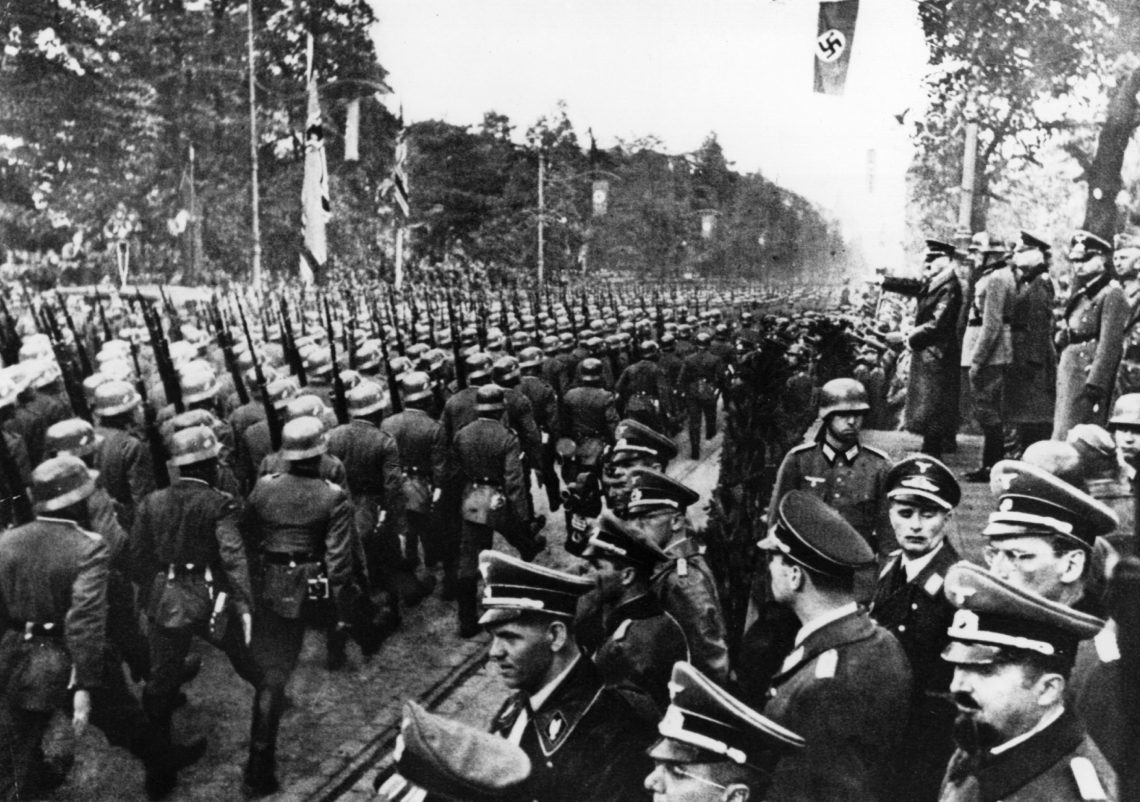Forever wars
Nations have sadly not renounced invasions or armed conflicts, requiring peace-seeking countries to strengthen alliances in hopes of preventing such violence.

In a nutshell
- Russia’s war on Ukraine shows the necessity of confronting aggressor nations
- NATO’s collective defense has proven to be a remarkable deterrent for allies
- A “forever war” is preferable to surrendering a nation’s freedom and sovereignty
Western European baby boomers have lived through a remarkably peaceful era for nearly eight decades. Remarkable because for our parents and grandparents – and all those who went before them – peace was simply an interlude between what must have felt like forever wars.
Although that experience of sustained peace is not an experience shared in many parts of the world, it has shaped Western assumptions and attitudes.
Like so many other baby boomers, I had a grandfather who was in the trenches in World War I. After recovering from injuries, he reenlisted and went with General Edmund Allenby to fight in the 1917-1918 British invasion of Palestine, seeing the Ottomans retreat from Jerusalem.
The British Imperial War Museum estimates that over 16 million people died in World War I, making it “one of the deadliest conflicts in the history of the human race.”
In opening the subsequent Versailles Peace Conference, attended by 32 countries, the French President Raymond Poincare said: “We are here to stop it happening again.”
He was joined in that objective by United States President Woodrow Wilson, United Kingdom Prime Minister David Lloyd George and French Prime Minister Georges Clemenceau – the “Big Three.” Unfortunately, there was precious little agreement about how to prevent the carnage from recurring.
Wilson had a 14-point grand plan, including the League of Nations. Lloyd George wanted reparations to pay for war damage. Clemenceau, “the Tiger,” wanted justice and for the Germans to be taught a lesson they would never forget.
Predictions of World War II
Lloyd George thought the end of the Great War would provide more of an interlude than a definitive moment: “We shall have to fight another war again in 25 years’ time.”
Marshal Ferdinand Foch, the French general who served as the Supreme Allied Commander during World War I, believed Versailles was far too lenient on Germany and declared: “This is not peace. It is an armistice for 20 years.”
In 1939, he and Lloyd George were proved right – and World War II was even more deadly.
The Imperial War Museum gives a conservative estimate of 60 million dead; around 3 percent of the estimated global population in 1940.
Just 20 years after returning from the Middle East, my grandfather saw all five of his sons at war again – with one killed in the Royal Air Force – and my father saw action as a Desert Rat at El Alamein and later in Italy at Monte Casino.
Notwithstanding the decisive defeat of Hitler’s Reich, throughout the 20th century – the world’s most deadly century (so far) – families, communities and countries were rarely free from the violence caused by war.
Between 1900 and today, some 187 million have died because of war. However, because of ferocious conflicts in places like Ethiopia’s Tigray – where they gave up counting the dead – who really knows how many more victims remain uncounted?
Add to these numbers the bloody carnage – perhaps as many as 100 million deaths caused by the Russian Revolution and Chinese Communism – and add to that the brutality generated by totalitarianism and nationalism and the number of people who saw their lives ended by violence is unfathomable.
More by Lord David Alton
The global crisis of religious persecution
The challenges facing King Charles III
Prospects for democratic capitalism
Russia revives horrors of war today
Now, in 2023, our attention is inevitably fixed on the illegal war in Ukraine, instigated by Russian President Vladimir Putin and accompanied by all the usual horrors of war, including mendacious war crimes.
Baby boomers had never again expected to see millions of Europeans fleeing across borders with little more than the clothes on their backs.
Meeting Ukrainian women and children arriving at a repurposed college in Vilnius, Lithuania, and being provided shelter as their husbands turned their cars around to go back to fight was instructive and salutary.
I was there with the former Conservative Party leader, Sir Iain Duncan Smith MP. As we gazed over barbed wire fencing into neighboring Belarus, it reminded me of why, in 1939, Britain entered a war to defend the rights of brave, beleaguered Poles.
Our rights come at a very high price – in lost lives, in suffering, in mourning, in grief, desolation and the upending of lives and separation of families and loved ones. But before Ukraine, maybe too many baby boomers had forgotten that.
By last year, one in three Ukrainians had been forced to flee their homes.
“Never Again” accompanied the promulgation of the Universal Declaration of Human Rights, the Convention on the Crime of Genocide and the creation of the United Nations.
By the end of 2022, nearly 6 million people were internally displaced, with another 5.7 million refugees and asylum seekers from Ukraine having taken sanctuary in Europe’s democracies.
In addition to Ukraine, Sweden’s Institute for Economics and Peace Research suggests that the number of deaths from conflicts worldwide almost doubled last year. Their Global Peace Index found that 91 states – more than half of the world’s countries – are involved in external conflict in some way, up from 58 in 2008.
In 2022, Oslo’s Peace Research Institute said Ukraine and Tigray were the primary contributors to the world’s death toll, with “over 237,000 battle-related deaths” and more “state-based conflict battle-related deaths in 2022 than in any year since 1994.”
In November 2022, an uneasy cease-fire was brokered in Tigray. However, with marauding and destabilizing Eritrean militias remaining in the territory, with the inability of international monitors to assess the situation on the ground and with no one brought to justice for appalling massacres and crimes against humanity, this cease-fire is being held together by exhaustion and starvation rather than any sense of conclusion.
So how do wars end and what comes in their place?
In Ukraine, would a cease-fire or an armistice – like that holding on the Korean Peninsula for the past 70 years – offer an end to the deaths and displacements? The precedents are instructive but not necessarily attractive.
The German Armistice (crafted initially by French General Foch in 1918) was brokered toward the end of 1918 – four years into World War I. The German Army was close to collapse. The country was in turmoil when its government approached President Wilson to negotiate a cease-fire. Confronted by internal political chaos and a revolution, the German government collapsed, and the Kaiser abdicated. Representatives of the new socialist republic met with the allies in a railway carriage, and – in the absence of any realistic negotiations – an armistice took effect on the 11th hour of the 11th day of the 11th month of 1918.
Technically, it was a 36-day cease-fire, but the war went into mothballs for 20 years – until an even more deadly war would begin, waged between 1939 and 1945.
This time there was no cease-fire or armistice.
The war finally ended when, on August 6 and 9, 1945, two atomic bombs were detonated over the Japanese cities of Hiroshima and Nagasaki, killing between 129,000 and 226,000 people, mostly civilians,
Nikita Khrushchev would say that in a third world war waged with nuclear weapons, “the living would envy the dead.” The acronym MAD – for mutually assured destruction – helped to define the ultimate insanity of such a conflict.
At the conclusion of World War II, political leaders had to come to terms with the new reality of nuclear weapons – this story is brilliantly captured in the movie Oppenheimer.

The consequences of appeasement
They also had to come to terms with the consequences of appeasement and the crimes of the Reich, most notably the Holocaust. The Nuremberg Trials created a mechanism for holding Nazis to account for their personal actions. It began a new attempt to create circumstances in which international order and the rule of law would prevent another war.
“Never Again” accompanied the promulgation of the Universal Declaration of Human Rights, the Genocide Convention and the creation of the United Nations. In due course, other new intergovernmental organizations, such as the European Coal and Steel Community, the European Economic Community and the European Atomic Energy Community, were all valiant attempts by democracies to stop the warmongers in their tracks. These were accompanied by extraordinary altruism and generosity by the U.S. under President Harry Truman, leading to billions of dollars flowing through the Marshall Plan into Western Europe to rebuild its infrastructure and economy.
NATO “committed its signatories to democracy, individual liberty, the rule of law and the peaceful resolution of disputes.”
But 1945 was like 1919 in one significant respect. It led to the carve-up of Europe at Yalta by the Soviet Union, the U.S. and the UK. It would lead only one year later to the famous Iron Curtain speech in the U.S. by Winston Churchill: “From Stettin in the Baltic to Trieste in the Adriatic, an iron curtain has descended across the continent.”
That ushered in the Cold War, framed the geopolitical landscape for the rising generation of baby boomers and was underpinned in 1949 by the founding of NATO.
Against the backdrop of an increasingly aggressive Soviet Union and Stalin’s coercion and domination of much of Central and Eastern Europe, NATO’s treaty of mutual support was signed in Washington by a dozen European and North American countries. It committed its signatories to democracy, individual liberty, the rule of law and the peaceful resolution of disputes. The recent NATO accession of Finland and the application of Sweden speaks volumes for its efficacy.
Ukraine left unprotected to Russia’s predatory war
Ukraine’s lack of membership – and its decision in 1994 to give up its Soviet-era stockpile of nuclear weapons (which made it briefly the world’s third-largest nuclear power), left it naked and open to Russia’s predatory war.
Article 5 is the cornerstone of NATO’s guarantee of mutual support. It commits its members to protect each other. Article 5 provides that if a NATO ally is the victim of an armed attack, each alliance member will consider this act of violence an armed attack against all members and take the actions necessary to assist the ally attacked.
NATO’s ability to prevent “forever wars” through collective defense is at the core of its founding treaty. It is not difficult to see why Ukraine has sought NATO membership or that such membership should be a given as part of any conclusion of the conflict with Russia.
The dangers of a Korean-style armistice
Some commentators have suggested that the frozen conflict on the Korean Peninsula could provide a precedent for Ukraine. That war raged from 1950 until 1953 and is the ultimate “forever war.” Although an armistice was agreed upon in 1953, the North and South and the South’s U.S. allies technically remain at war. But in 1953, with 2.5 million dead, both sides decided to draw a line at the 38th parallel and see what the future might hold.
I have traveled across both parts of the Korean Peninsula. The contrast could not be greater: in the South, people live in one of the world’s great democracies. Human rights are respected, and the rule of law is upheld. That part of Korea features a vibrant free press, a well-developed civil society and a prosperous economy.
In the North, there is a tyranny, which 10 years ago, a UN Commission of Inquiry found responsible for crimes against humanity. It described the North as a “state without parallel,” comparable to Nazi Germany. It found that “systematic, widespread and gross human rights violations have been, and are being, committed by its institutions and officials.”
The report describes a network of prison camps in which hundreds of thousands of political prisoners have been mistreated or killed through “deliberate starvation, forced labor, executions, torture, rape and the denial of reproductive rights through punishment, forced abortion and infanticide.”
Would a Korean-style armistice be something to actively promote?
The report takes us into a world where 26 million people experience an “almost complete denial of the right to freedom of thought, conscience and religion as well as of the rights to freedom of opinion, expression and information association.”
The situation has improved little since the publication of that report a decade ago. If anything, the situation is even worse in this state set in aspic.
On the one hand, it is a country that obdurately defies the international community and UN Security Council resolutions against testing ballistic missiles and developing a nuclear capability. On the other hand, it reinforces its totalitarian dictatorship and cult of leader-worship.
During the recent typhoon, North Korean leader Kim Jong-un gave the country orders that the first thing citizens should do was to ensure that the obligatory Kim portraits in their homes were rescued and put out of harm’s way. In a basket-case economy where people suffer malnutrition and hunger, it is a pity that the well-being of the people does not warrant the same priority.
Would a Korean-style armistice be something to actively promote if the outcome for Ukrainians left stranded behind Vladimir Putin’s line was to be a comparable and catastrophic loss of liberty, freedom and sovereignty? That would be the consequence of partition. Commentators need to be careful about what they wish for.

Ukraine has everything to lose
And what kind of Russia does the future hold? If President Putin is bad, what would a Russia “governed” by a Wagner-style conglomerate of mercenary armies look like? After the Russian Civil War (1917-21), more than 30 fledgling states erupted from the ruins of the tsar’s empire. Some say that as many as 10 million lost their lives. The Chinese Communist Party is doubtless watching this with great anticipation, as Beijing sees itself as the ultimate beneficiary.
Perhaps the best and only hope is that there are still some patriots within the Russian army who topple President Putin and steer Russia out of the quagmire into which he has taken it. The war in Ukraine is not existential for Russia, but it may well be for Mr. Putin. It is, however, existential for Ukraine. That country has everything to lose: its people, territory and sovereignty as well as its way of life and identity.
The counteroffensive has demonstrated Ukraine’s gallant courage. But although there has been generous materiel support from individual nations, it has felt incoherent and sporadic. The knockout blow that would bring Mr. Putin into negotiations has not come.
What is clear is that Ukraine must be able to act from a position of strength, which is why Ukraine must be supported as it fights for its very existence.
Indeed, it probably suits the Kremlin to let this become a war of attrition in which it rides out sanctions. It suits them to see Western economies taking a hit and for American resolve to be ensnared by the vagaries of domestic politics. Above all, the Kremlin hopes that a White House that dumps Ukraine will prompt its European allies to drift away. Russian Foreign Minister Sergei Lavrov said as much recently: “The U.S. does not have the best historical record when it comes to supporting its allies.” He was no doubt thinking of Afghanistan.
A better understanding of the record would recall the U.S. role in the founding of NATO and its support for countries – from Poland to Czechoslovakia – seeking their freedom from Soviet hegemony. Its unequivocal support for South Korea in the face of endless provocation from the North is also admirable, as is its opposition to using force to redraw national boundaries (with Taiwan in mind).
Those are still challenges that the West and Ukraine face. Talk, for now, of armistices, cease-fires and contrived settlements is wrong. Albert Einstein once said, “Peace cannot be kept by force; it can only be achieved by understanding.” For now, it is not easy to imagine any understanding between Kyiv and the Kremlin. And to be clear, there is only one aggressor here – one invader and no moral equivalence.
Scenarios
For the future, and as circumstances change, Kyiv will presumably have to decide what it wishes to put on the table.
An internationally guaranteed and administered plebiscite of Russian-occupied Donbas and Crimea might be part of that, along with NATO and European Union membership. A Nuremberg-style tribunal could ensure justice for perpetrators of war crimes and the “crime of aggression.” A new Marshall Plan could be created for reconstruction, partially funded by the confiscated assets of Mr. Putin’s collaborators. But such questions are ultimately for Ukrainian President Volodymyr Zelenskiy and Ukraine to decide, not commentators.
What is clear is that Ukraine must be able to act from a position of strength, which is why Ukraine must be supported as it fights for its very existence. Better a “forever war” than a defeat that robs Ukraine of its right to exist.
For industry-specific scenarios and bespoke geopolitical intelligence, contact us and we will provide you with more information about our advisory services.









